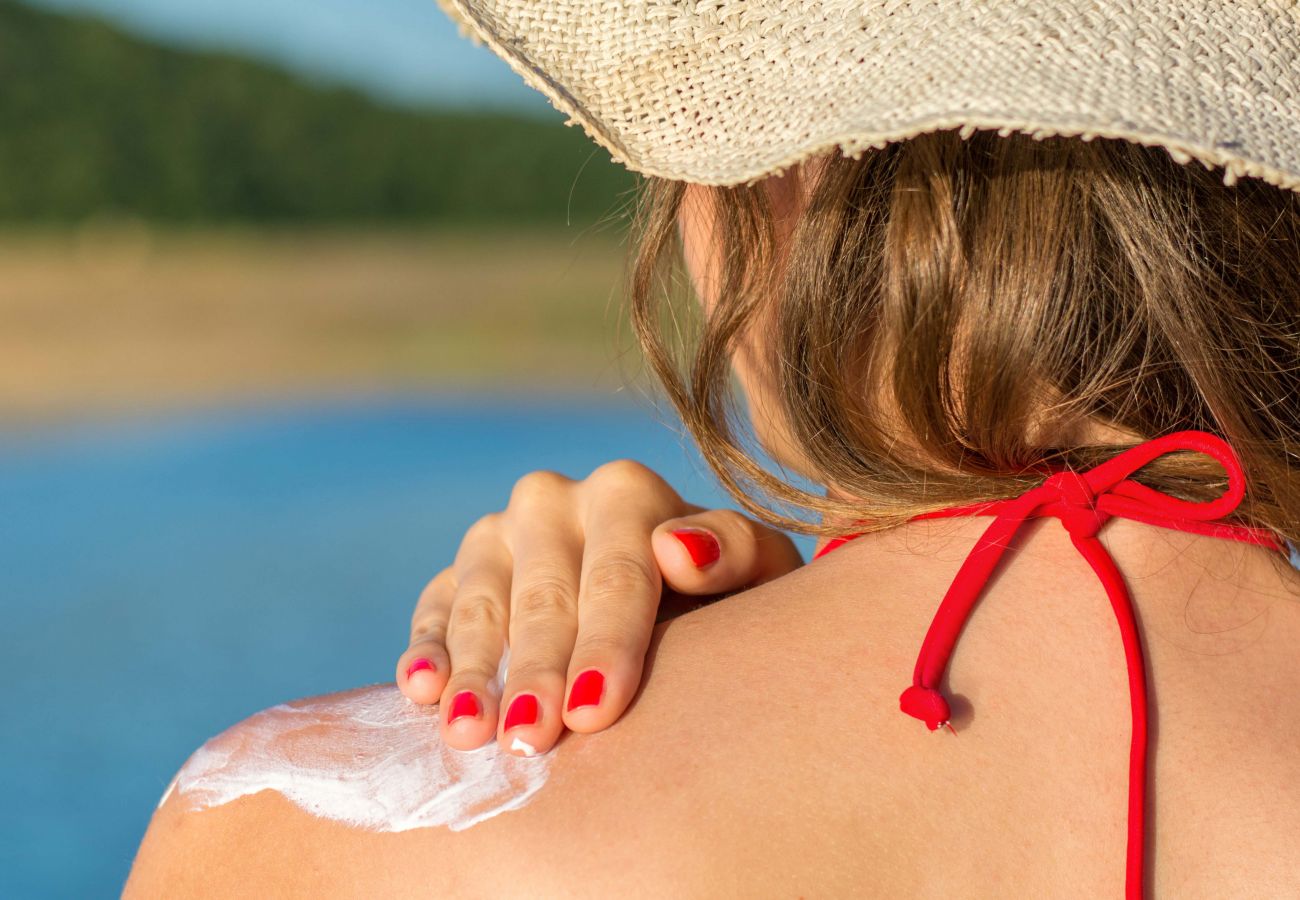During the summer and warm weather season, it’s important to remember that exposure to ultraviolet (UV) radiation from the sun can increase your risk of developing skin cancer.
Sunscreen, when used properly, decreases the amount of UV radiation that penetrates the skin. But not all sunscreens are created equal. When choosing a sunscreen, look at the SPF, or sun protection factor, number. We recommend using sunscreen with an SPF of at least 30. Anything under 30 is not as effective, and those with SPF higher than 30 are not significantly more effective.
It’s important to note that the SPF number only applies to protection from UVB rays. The sun’s UVA rays are also very damaging to the skin, so it is crucial to use sunscreen that protects from UVA as well. These sunscreens will be labeled as “broad spectrum.” Sunscreen is typically active for only 2-3 hours, so it needs to be reapplied throughout the day when outdoors. If you are planning on swimming or will be sweating, the sunscreen used should also be water resistant and reapplied after 40 minutes.
Sun-Safety Tips
Exposure to sun and artificial tanning is the most preventable risk factor for all skin cancers, including melanoma. Here’s a quick reference list of the most important ways to safely enjoy this time of year:
- Generously apply a broad-spectrum, water-resistant sunscreen with SPF of at least 30 to all exposed skin. Reapply approximately every two hours, even on cloudy days, and after swimming or sweating.
- Wear protective clothing, such as a long-sleeved shirt, pants, a wide-brimmed hat and sunglasses, when possible.
- Seek shade when appropriate. Remember that the sun's rays are strongest between 10 a.m. and 4 p.m. If your shadow is shorter than you are, seek shade.
- Use extra caution near water, snow and sand because they reflect the damaging rays of the sun, which can increase your chance of sunburn.
- Get vitamin D safely through a healthy diet that may include vitamin supplements. Don't seek the sun as your source of vitamin D.
- Avoid tanning beds. Ultraviolet light from the sun and tanning beds can cause skin cancer and wrinkling. If you want to look tan, consider using a self-tanning product, but continue to use sunscreen with it.
- Check your skin regularly for new or changing moles or non-healing growths.
How To Perform a Skin Self-Exam
Know your body by regularly performing a skin self-exam. You can act fast if you happen to notice any changes. Our experts can teach you how.
Learn MoreOther Sunscreen Tips
Sunscreens work best when applied to dry skin 15 to 30 minutes BEFORE going outdoors. When using sunscreen, be sure to apply it to all exposed areas and pay particular attention to the face, ears, hands and arms. Coat the skin liberally and rub it in thoroughly — most people apply only 25 to 50 percent of the recommended amount of sunscreen.
One ounce, enough to fill a shot glass, is considered the amount needed to cover the exposed areas of the body properly. Don't forget that lips get sunburned, too, so apply a lip balm that contains sunscreen with an SPF of 30 or higher.


